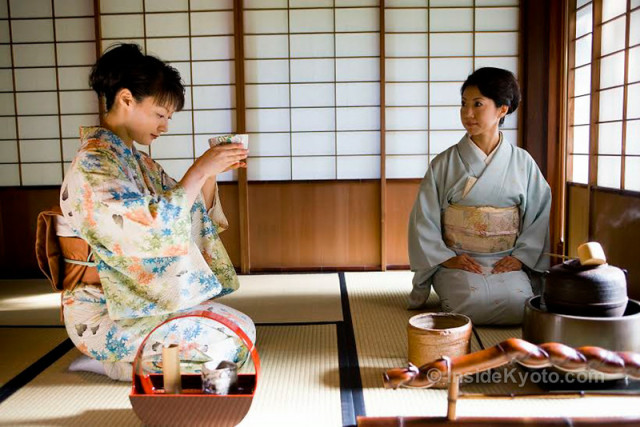
Complete each sentence choosing the correct option
At a very basic level, tea ceremonies are a formalized way of making tea, in a process which has been refined to yield the best taste. Historical documents on the subject include the 8th-century monograph "The Classic of Tea" and the 12th-century book Treatise on Tea.
In Japan, a tea ceremony is a blend of two principles, sabi and wabi. "Wabi" represents the inner, or spiritual, experiences of human lives. Its original meaning indicated quiet or sober refinement, or subdued taste "characterized by humility, restraint, simplicity, naturalism, profundity, imperfection, and asymmetry" and "emphasizes simple, unadorned objects and architectural space, and celebrates the mellow beauty that time and care impart to materials. "Sabi," on the other hand, represents the outer, or material imperfection of life, also the original nature of things. Zen Buddhism has been an influence in the development of the tea ceremony. The elements of the Japanese tea ceremony is the harmony of nature and self cultivation, and enjoying tea in a formal and informal setting. The Japanese tea ceremony developed as a "transformative practice", and began to evolve its own aesthetic, in particular that of "sabis" and "wabis" principles. Understanding emptiness was considered the most effective means to spiritual awakening, while embracing imperfection was honoured as a healthy reminder to cherish our unpolished selves, here and now, just as we are – the first step to "satori" or enlightenment. Tea drinking is used as an aid to meditation, for assistance in fortune telling, for ceremonial purposes and in the expression of the arts.
Practice your writing skills by discussing the questions below
- What kind of ceremony and/or ritual is practiced in your country?
- Is drinking tea part of your tradition? if not, what do you drink traditionally?


 Download Google Chrome
Download Google Chrome Download Mozilla Firefox
Download Mozilla Firefox Download Opera
Download Opera